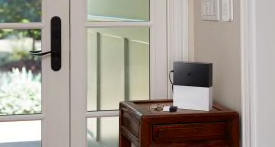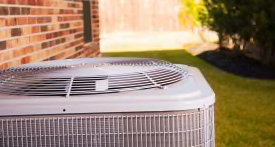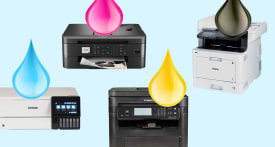Save More—and Waste Less—in the Yard and Garden
Use these tips to go green and save green—to the tune of $230—in your backyard
When you shop through retailer links on our site, we may earn affiliate commissions. 100% of the fees we collect are used to support our nonprofit mission. Learn more.

Watering our lawns and gardens uses up a huge amount of water—nearly 8 billion gallons a day, according to the Environmental Protection Agency. That’s more than the average American household uses for showering and washing clothes combined.
And our gas-powered yard tools, from lawn mowers to leaf blowers to string trimmers, spew out hefty amounts of noxious emissions into the air. But there are alternatives. With simple habit changes and battery-operated tools, you can save water, energy, and up to $230, while reducing the air pollution you generate.
Here are the how-tos, and links to additional articles that will help you save money (and live more sustainably) throughout your home.
How to Save More at Home
Save More—and Waste Less—in the Bathroom
Save More—and Waste Less—in the Kitchen
Save More—and Waste Less—in the Laundry Room
Save More—and Waste Less—All Around the House
Smarten Up Your Sprinklers and Save Up to $150 a Year
At the start of 2023, a stunning 46 percent of the lower 48 states were in drought, according to the U.S. Drought Monitor. Now consider that most of the almost 8 billion gallons of water we use outdoors every day goes to landscape irrigation. Experts estimate that up to half of that H₂O is wasted because of overwatering caused by inefficient systems. One way to do better: with WaterSense-labeled irrigation controllers that hydrate plants only as needed, saving the average home up to 15,000 gallons per year vs. clock-centric controllers. That could cut the average annual outdoor water bill of $300 in half, saving up to $150 a year.
Zero In on Xeriscaping
This landscaping technique aims to conserve water with soil analysis, plants adapted to low rainfall, the use of mulch, and more. David Bainbridge, a restoration ecologist and an author, used a water district grant to redo his San Diego yard and now saves about $300 per year on water bills. Check with your water district to see whether it offers grants, too.
CR's Guide to Sustainable Living
Check out eco-friendly products and simple solutions for a green home.
Make Friends With Mulch
Want to spend less on water and weed killers for your garden? Spread mulch around plantings. It reduces evaporation from the soil, keeps the soil cool, adds nutrients, and can support beneficial microorganisms, Bainbridge says. If it’s time for some new lawn equipment, consider a mulching battery lawn mower, like the CR Recommended models below. These mowers leave behind mulched grass clippings, which nourish the soil by putting nitrogen back in, reducing the amount of store-bought fertilizer you need. You’ll spend less for a healthier lawn.
Best Mulching Battery Push Mowers From CR's Tests
Control Outdoor Lighting With a Timer
Outdoor lighting can improve your home’s security, curb appeal, and livability. But it may also hike up your electric bill if you tend to forget to turn lights off. Using a timer can make illuminating your property more manageable and less expensive. For example, Home Depot stocks wireless, weatherproof photo-sensitive timers by Woods ($11) that can seamlessly turn on outdoor lights at dusk and turn them off at dawn or can be set to turn lights off after a certain number of hours. No more accidentally leaving the patio lights on all night after a barbecue!
Tweak Your Hot Tub and Save About $80 a Year
Those who own a hot tub get to relax in deliciously warm, bubbly water, but they’re also hit with higher bills—to the tune of $40 a month, on average, according to home services aggregator Angi.
Switch to Battery-Powered Yard Tools
Five quick reasons to opt for rechargeable tools:
1. Their motors produce zero emissions. Gas tools, by contrast, emit carbon dioxide, nitrogen oxides, and volatile organic compounds (VOCs). In fact, they are dirtier than car engines.
2. They’re typically more efficient than gas-powered tools. That means they require less energy to do the same amount of work.
3. They are usually noticeably quieter than their gas-guzzling counterparts. That can be a boon for both you and your neighbors.
4. There’s no need to refuel and risk a gasoline spill. That type of slip-up can contaminate groundwater and aquatic systems.
5. They tend to be more reliable than gas tools, according to CR’s member surveys.
Most Reliable Battery String Trimmers and Leaf Blowers
Editor’s Note: This article also appeared in the May/June 2023 issue of Consumer Reports magazine.
















